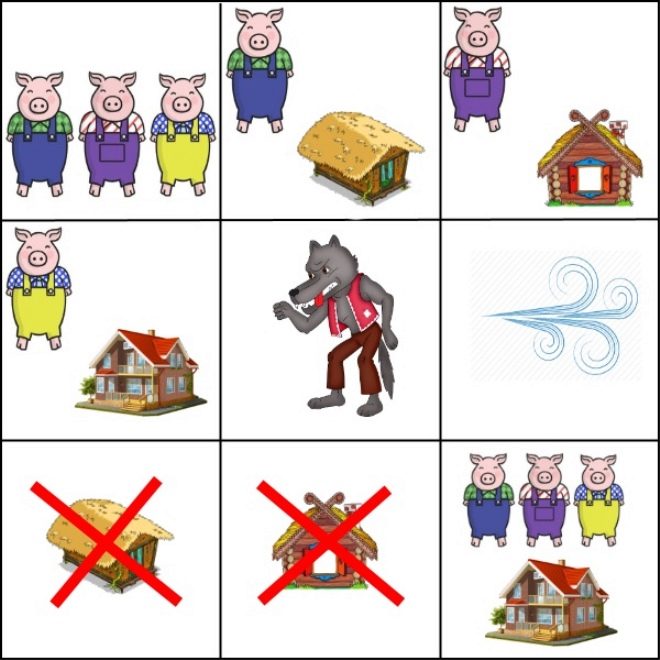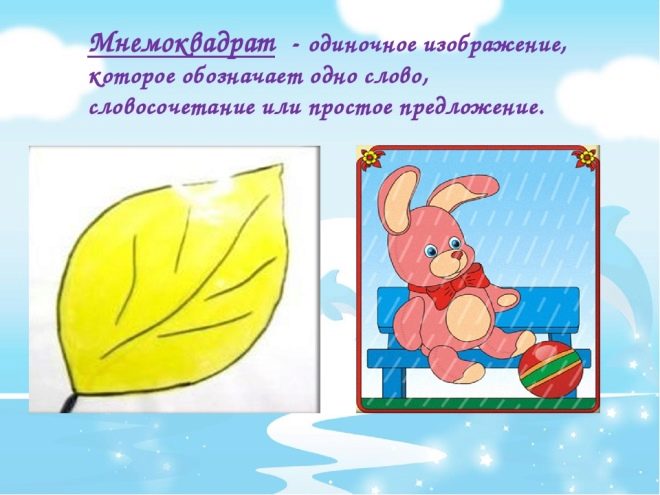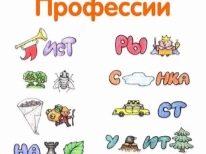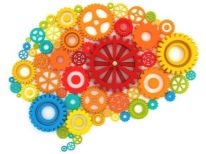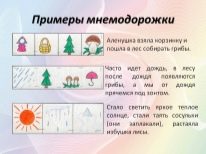What methods and techniques of mnemonics can be used when teaching children?
A good memory in our time is one of the most important factors that make it possible to build a career and achieve success in any area of life. Not everyone is gifted with a good memory from birth, however, you should do everything possible to improve your ability to memorize, and you should start in childhood.
There are even special techniques for improving memory, so we will consider in more detail what the mnemonics are.
What it is?
Mnemotechnology, also known as mnemonic, is a special set of methods and techniques that allow you to turn any information you need to memorize into clear images that are permanently stored in memory due to some associative series.
The same school lessons for children are usually of little interest, since they are too often limited to presenting dry facts; if you turn the training into a fascinating story with vivid demonstrations or even a game, the result is able to exceed all imaginable expectations.
The overall development of memory, provided with the help of mnemo, allows to achieve various advantages. If you are informed of important information in the form of names, names or phone, and there is nothing to write them down, thanks to the practice of mnemonics, you are more likely to be able to remember them at least until you reach a reliable information carrier.
For students this is a “gold mine”, because memorizing verses or preparing for exams can now be much faster., and the need for cheat sheets is greatly reduced.
A person who speaks to the public without peeping at a piece of paper always arouses more respect and attention than one who simply reads from the sheet, because for speakers and teachers this is also a very valuable technique.
Pros and cons for children
The principles of mastering mnemonics for beginners can be found for any age, however, it is generally accepted that it is best to start learning at a preschool age — then the child can master the school and university knowledge that will be useful in later life much more intensively.
A vivid example of mnemonics is the famous proverb about a hunter and a pheasant, which allows children to learn the sequence of colors of the rainbow. At the same time, it is in childhood that this technique gives maximum opportunities for the diversified development of the child:
- any necessary information is remembered without any extra effort and stored for a long time;
- along the way, the exercises train the memory, allowing you to memorize even what is not clothed in the most memorable form;
- because of the large number of metaphors and associative thinking, the child’s vocabulary is expanding, the pronunciation is improving, the horizons are broadening;
- logic, imagination, creative skills and intelligence are improved, over time allowing you to convert any knowledge given into mnemotechnical form;
- Most techniques allow you to work even at home, and are also suitable for children with disabilities.
Like any other teaching method, mnemonics for a particular child may turn out to be built up incorrectly, due to which the result will not reach the expected level.
Common errors when building a program are as follows:
- If learning began at a very early age, it should be remembered that the baby’s vocabulary and horizons are still small, so some associations are simply not available to him, and too complex matters will simply slow down development;
- mnemonic is a tool for memorizing rather complex things; one should not use it to fix any elementary information in memory, since excessive accumulation of associations only confuses;
- Mnemotechnics is just one of the ways to memorize information, it cannot be used absolutely in any situation, so you should not completely abandon learning mechanical learning, since it will also be useful in life.
Education by age group
According to the majority of specialists studying child development, You can start the first mnemonics classes with kids at the age of about three years. At this stage, the child only learns to speak, since his vocabulary is still not beyond the scope of everyday concepts.
Now it is important to simply expand his vocabulary, and for this it is necessary that the concepts being studied for him should be as less abstract as possible.
So, having learned the word "autumn", a three-year-old kid may not understand its meaning and forget it all at all for a year, but a simple picture (they are called mnemo-squares) depicting a yellow leaf or a tree with a yellowed crown will become for him a clear association that will improve memorization and will not allow to make a mistake when determining the current time of the year.
By 4–5 years old The brain of a child is developed enough to go on to the tracks - the same pictures, which are divided into three or four consecutive images and describe the concept from different sides. So, the track may consistently show a yellowed tree, a yellow leaf and a wedge of birds flying away. Even if all this is shown schematically, such clues allow the baby to get from the depths of his memory what he already knows, but forgot a little.
The blurred concept of autumn is becoming more meaningful, the child is ready to give a typically childlike definition of this season of the year, which may seem naive and not entirely accurate, however, it still indicates a clear understanding of what is happening.
About from the age of 6 years can be given to kids for learning mnemotables. These are the same tracks, only here there are more pictures, they can go in two rows and often convey not only one concept, but also a whole story, albeit a small one. The task of teachers at this stage of development is to conduct teaching storytelling when a child retells the plot of a favorite children's book or teaches a verse. Here, the amount of memorized information is already quite significant, because the child will have to connect an associative arrayto properly file the plot. At the same time practicing and manner of speaking, the correctness of the presentation.
In order to improve the associative thinking, a rebus can also be served as a mnemo table, and later the task can be significantly complicated by proposing to the child to invent his own story using such a table.
In the future, such pictograms can even serve as a manual on life safety or behavioral characteristics in different places. An example of the development of mnemonics and its use in adulthood are the same signs, as well as instructions on some products, submitted in the form of simple pictures.
Actually, mnemo squares, mimic paths and mnemotables are the main methods of teaching children - it is only important to build them in the correct order.
Application specifics
To mnemonics gave decent results, you should follow some simple rules. In general, they are logical, and you can think of them yourself, but just in case we systematize them in order to avoid obvious misses when studying at home.
- Exercises are served with consistency. from easy to hard. Intellectual and logical abilities preschooler rather modest, so one should not expect him to begin to grasp knowledge on the fly, jumping over several levels. You should always start with mnemokvadratov, even if the child clearly outdid them in age - just to understand that in terms of development he is already higher. It should not be forgotten that some of the concepts given by mnemonic squares can be quite complex even for adults, so haste is inappropriate.
- Mnemonic is very helpful in speeding up memorization, but its capabilities also have a certain limit. It’s hard for a preschooler to remember a lot of information right away therefore, it is generally accepted that the maximum daily allowance is two tables with no more than nine pictures in each. Even if the baby shows an interest in increasing the volume, it is not worth it - the information will be simply swallowed, but it will not linger in memory.
Please note that even this volume is a bit too much for some children, so check the real results with your own expectations and, if necessary, reduce the volume in favor of efficiency.
- The point of mnemotechnics is to make fascinating, initially, not the most interesting information. In the case of preschoolers, this effect is achieved with the help of bright colors - then the kid himself reaches out for knowledge, tries to grasp the meaning and “accidentally” remembers it. For good results, avoid black and white or pale images.
- Children do not understand the meaning of the word "necessary", therefore learning should be fun for them. In the process of memorizing, the interest of the memorizing plays a huge role, and the kids tend to block off from the whole frightening or unpleasant on a subconscious level. For this reason, associations of mnemonics should concentrate on positive or at least neutral qualities without obvious minuses of the concepts being studied.
- For the above reason, a child of preschool age one cannot be forced to study here and now, if he shows no interest in this - it will only make things worse. Watch the reaction of the kids: the lesson should continue as long as they are interested. At this age, they themselves determine its maximum duration, and if the baby has clearly lost interest or his attentiveness has decreased, this is a clear signal to stop, even if you have planned more.
- Preschoolers do not know how to concentrate attention for a long time on a certain one topic, but their interest is easy to maintain by constantly giving something new. For this reason, if you plan to give the same mnemotables two per day, make sure that they are on fundamentally different topics. If you decide to delve too deeply into one of these topics, you will lose children's interest and will be forced to stop the lesson, as described above.
In the next video, you will find several techniques of mnemo technology for teaching children.


